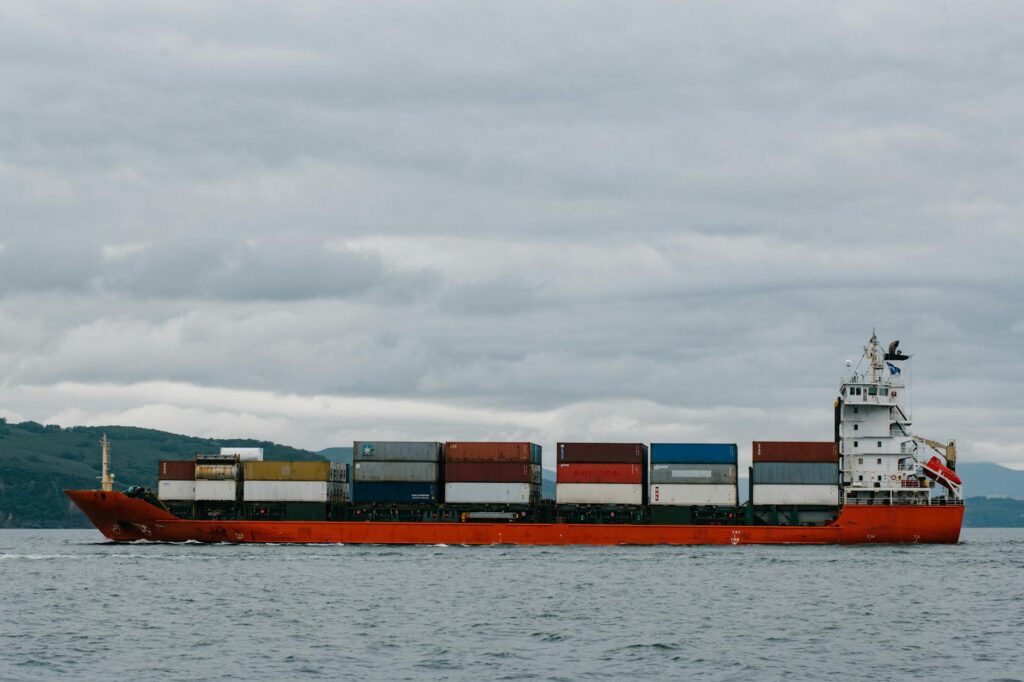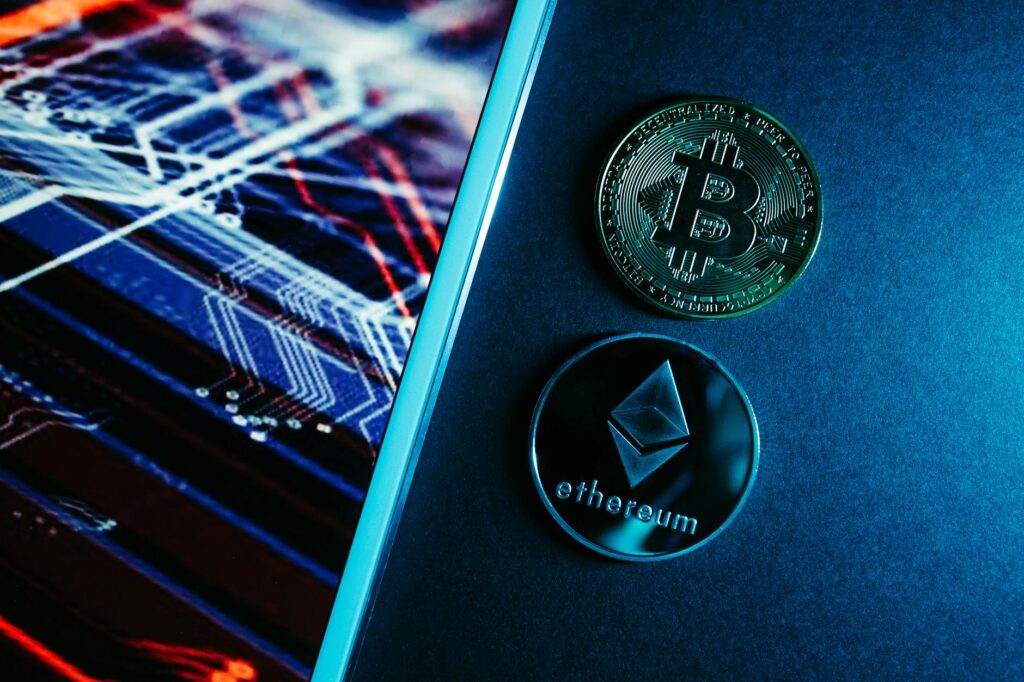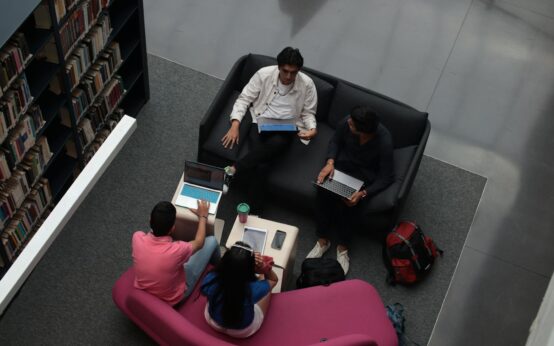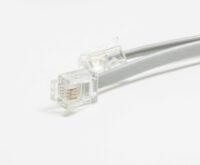The Future of Supply Chain Management with Blockchain and IoT
Ever wonder how that avocado from Mexico got to your local grocery store? Or if the ‘designer’ handbag you bought online is the real deal? The journey of a product from its origin to your hands is a long, winding road called the supply chain. And for the most part, it’s been a black box. A complex web of manufacturers, shippers, distributors, and retailers, often working with paper-based records or siloed digital systems that don’t talk to each other. This creates delays, fraud, and a frustrating lack of transparency. But what if we could shine a bright, unbreakable light on every single step of that journey? That’s the promise of a powerful tech duo set to redefine everything we know about logistics. We’re talking about the future of supply chain management with Blockchain and IoT, a combination that isn’t just an upgrade—it’s a revolution.
Think of it this way: The Internet of Things (IoT) provides the real-time eyes and ears on the ground, while Blockchain acts as the un-hackable, incorruptible notary, recording every detail for all to see. Together, they create a level of trust and efficiency that was once the stuff of science fiction. It’s a huge deal. This isn’t just about moving boxes faster; it’s about building a smarter, more resilient, and fundamentally more honest global trade network.
Key Takeaways
- The Problem: Traditional supply chains are opaque, inefficient, and prone to errors and fraud due to disconnected systems and manual processes.
- The Solution: Combining the Internet of Things (IoT) for real-time data collection with Blockchain for secure, immutable record-keeping.
- IoT’s Role: Sensors provide live data on location, temperature, humidity, shock, and other critical conditions, giving a real-time view of goods in transit.
- Blockchain’s Role: It creates a shared, decentralized, and tamper-proof ledger where all this IoT data is recorded, ensuring transparency and trust among all parties.
- The Synergy: IoT provides the trusted data, and Blockchain provides the trusted environment for that data, enabling things like self-executing smart contracts that automate payments and compliance.
- The Impact: This combination leads to enhanced traceability, reduced fraud, improved efficiency, and greater consumer confidence.

Unpacking the Mess: Why Traditional Supply Chains are Broken
Before we can appreciate the solution, we have to really understand the problem. The traditional supply chain is a relic of a bygone era. It’s a fragmented system built on trust that is often misplaced. Imagine a simple shipment of pharmaceuticals from a factory in India to a pharmacy in Chicago. This involves dozens of steps and multiple organizations: the manufacturer, a local trucking company, an export agent, a shipping line, customs brokers in two countries, another trucking company, a distributor, and finally the pharmacy.
Each of these entities keeps its own records. Often on paper. Sometimes in an Excel spreadsheet. Maybe in a proprietary software system. Getting a clear, end-to-end picture is nearly impossible. This leads to some massive headaches:
- Lack of Visibility: Where exactly is the shipment right now? Has it been stored at the correct temperature? Nobody knows for sure until it arrives, and by then, it might be too late.
- Inefficiency and Delays: A single piece of missing paperwork can leave a container sitting on a dock for weeks, creating a costly bottleneck that ripples through the entire chain.
- Counterfeiting and Theft: Opaque supply chains are a playground for fraud. It’s shockingly easy to introduce counterfeit goods—from fake medicines to knock-off electronics—into the system.
- Dispute Resolution: When something goes wrong—say, a shipment of produce arrives spoiled—who is at fault? With no single source of truth, finger-pointing and lengthy, expensive disputes are the norm.
This isn’t just inefficient; it’s dangerous. It puts consumers at risk, costs businesses billions, and creates enormous waste. We needed a better way. And it’s finally here.
Enter Blockchain: The Ultimate Ledger of Truth
When most people hear ‘blockchain,’ they think of Bitcoin. That’s understandable, but it’s like thinking of the internet as just email. Bitcoin is just the first major application of blockchain technology. At its core, a blockchain is a distributed, immutable ledger. Let’s break that down.
- Ledger: It’s a record book, just like an accountant would use.
- Distributed: Instead of one person or company holding the ledger, an identical copy is shared among many participants in the network. There’s no central authority.
- Immutable: Once a transaction (or any piece of information) is added to the ledger, it is cryptographically sealed. Changing it is practically impossible, as you’d have to alter the record on thousands of computers simultaneously.
Think of it as a digital notary that can’t be bribed or fooled. In a supply chain, every time a product changes hands, is inspected, or has its temperature checked, a new entry is made on the blockchain. Everyone involved—the farmer, the shipper, the retailer, and even the consumer—can see the exact same information, creating a single, shared source of truth.
The Magic of Smart Contracts
This is where it gets really exciting. Blockchains can also host ‘smart contracts’—self-executing contracts where the terms of the agreement are written directly into code. They are essentially ‘if-then’ programs that run on the blockchain. For example, a smart contract could be programmed to automatically release payment to a shipper as soon as a shipment’s arrival at a port is verified and recorded on the blockchain. No more waiting for invoices to be processed. No more manual checks. The process becomes automated, fast, and completely transparent, eliminating disputes over payments and fulfillment.
IoT: The Eyes and Ears on the Ground
So, blockchain provides a secure place to store information. But where does that information come from? How can we trust that the data being entered onto the blockchain is accurate in the first place? That’s where the Internet of Things (IoT) comes in. IoT refers to the vast network of physical devices—from tiny sensors to massive machines—that are embedded with software and other technologies for the purpose of connecting and exchanging data over the internet.
In a supply chain, this means putting smart sensors on just about everything: shipping containers, pallets, even individual boxes. These sensors can monitor and report on a whole range of conditions in real-time:
- GPS Location: Pinpoint the exact location of a product at any moment.
- Temperature and Humidity: Crucial for sensitive goods like food, pharmaceuticals, and chemicals.
- Shock and Tilt: Detect if a fragile package has been dropped or mishandled.
- Light Exposure: Determine if a container has been opened when it shouldn’t have been.
Suddenly, the black box is a glass box. You no longer have to guess if that container of ice cream melted on a hot tarmac or if a shipment of sensitive electronics was damaged in transit. You have the data. Cold, hard, real-time data. This data is the lifeblood of the new, smarter supply chain. But data alone isn’t enough. It needs to be captured in a way that everyone can trust.
The Power Couple: Forging a Truly Smart Supply Chain Management with Blockchain and IoT
This is the main event. This is where one plus one equals a hundred. IoT and Blockchain on their own are powerful technologies. But when you combine them, you create a system that is greater than the sum of its parts. The synergy is what defines the future of supply chain management with Blockchain and IoT.
Here’s how it works in practice. Imagine that shipment of temperature-sensitive vaccines again.
- Data Generation (IoT): An IoT sensor inside the refrigerated container constantly monitors the temperature and its GPS location. It’s programmed to send an update every 15 minutes.
- Data Recording (Blockchain): Each of these data points—a timestamp, a GPS coordinate, and a temperature reading—is automatically written as a new transaction on a private blockchain shared between the manufacturer, logistics company, and the receiving hospital.
- Automated Verification (Smart Contracts): A smart contract is in place with the agreed-upon condition: the temperature must remain between 2°C and 8°C for the entire journey. Every time a new temperature reading is added to the blockchain, the smart contract automatically checks it.
- Real-Time Action and Immutable Proof: If the temperature ever goes outside the safe range, say to 9°C, the IoT sensor records it, the blockchain immutably stores it, and the smart contract is instantly triggered. It could send an alert to the driver and logistics manager, automatically file a compliance report, and even assign financial liability for the compromised shipment according to the pre-agreed terms.
In this scenario, there’s no room for argument. The data is generated by a trusted sensor and recorded on a tamper-proof ledger. The consequences are executed automatically. It’s a self-managing, self-policing system built on a foundation of digital trust. This simple feedback loop—IoT collects, Blockchain protects—can be applied to virtually any aspect of the supply chain, from verifying the organic origin of coffee beans to tracking conflict-free minerals from mine to manufacturer.
“IoT provides the trusted data, and Blockchain provides the trusted environment for that data. This combination moves us from a world of ‘trust but verify’ to one of ‘digitally certified truth’.”
From Theory to Reality: Real-World Applications
This isn’t just a futuristic concept; it’s already happening. Major companies are piloting and deploying these systems to solve real-world problems.
Walmart’s Food Trust
Food safety is a massive concern. When an E. coli outbreak occurs, it can take weeks to trace the contaminated produce back to its source, during which time more people can get sick and millions of dollars of perfectly safe food is thrown away out of caution. Using IBM’s Food Trust platform, built on blockchain, Walmart can now trace a product’s journey from farm to shelf in as little as 2.2 seconds instead of the 7 days it used to take. By simply scanning a QR code, they get an immutable record of a product’s entire lifecycle, dramatically improving safety and reducing waste.
De Beers’ Diamond Journey
The diamond industry has long been plagued by ‘blood diamonds’—gems mined in war zones and sold to fund conflict. To combat this, De Beers launched Tracr, a blockchain platform that creates a digital record for every registered diamond, tracking it from the mine all the way to the retailer. This provides an immutable certificate of authenticity and provenance, assuring consumers that their purchase is conflict-free.

It’s Not a Silver Bullet: The Challenges Ahead
As with any transformative technology, the road to widespread adoption is not without its bumps. Creating this new digital infrastructure is a complex undertaking with several significant hurdles to overcome:
- Cost of Implementation: Outfitting entire supply chains with IoT sensors and integrating blockchain platforms requires significant upfront investment in hardware, software, and training.
- Interoperability and Standards: A supply chain is a network of networks. For this to work seamlessly, different companies using different blockchain platforms need to be able to communicate. Establishing universal standards is a major challenge.
- Scalability: Global supply chains generate an astronomical amount of data. Blockchain networks need to be able to handle this massive volume of transactions quickly and efficiently without getting bogged down.
- Data Privacy: While transparency is a key benefit, some supply chain data is commercially sensitive. Systems must be designed to share necessary information without revealing confidential business intelligence.
- Regulation: The legal and regulatory frameworks for technologies like blockchain and smart contracts are still evolving, creating uncertainty for businesses looking to invest.
Conclusion: Building the Supply Chain of Tomorrow, Today
The challenges are real, but they are not insurmountable. The potential benefits of combining Blockchain and IoT in supply chain management are simply too massive to ignore. We are moving away from a system based on paper, promises, and post-mortems to one built on data, digital proof, and real-time prevention. It’s a fundamental shift from reactive to proactive.
This technological fusion promises a future where we can verify the authenticity of our medicines, know the precise origin and journey of our food, and create a global trade system that is not only more efficient and profitable but also safer, more sustainable, and more equitable. The black box is being pried open, and the light that’s pouring in will change everything.



 The Ethics of AI Content: Bias, Truth, and Ownership
The Ethics of AI Content: Bias, Truth, and Ownership  Serverless Architecture: The Ultimate Guide for Developers
Serverless Architecture: The Ultimate Guide for Developers  AI Translating Ancient Texts: A Digital Rosetta Stone
AI Translating Ancient Texts: A Digital Rosetta Stone  Improving Mental Health Diagnostics with Technology
Improving Mental Health Diagnostics with Technology  How Tech Creates More Inclusive Banking for All
How Tech Creates More Inclusive Banking for All  Beyond Passwords: The Future of Authentication Is Here
Beyond Passwords: The Future of Authentication Is Here  Backtest Crypto Trading Strategies: A Complete Guide
Backtest Crypto Trading Strategies: A Complete Guide  NFT Standards: A Cross-Chain Guide for Creators & Collectors
NFT Standards: A Cross-Chain Guide for Creators & Collectors  Decentralized Storage: IPFS & Arweave Explained Simply
Decentralized Storage: IPFS & Arweave Explained Simply  How to Calculate Cryptocurrency Taxes: A Simple Guide
How to Calculate Cryptocurrency Taxes: A Simple Guide  Your Guide to Music NFTs & Top Platforms for 2024
Your Guide to Music NFTs & Top Platforms for 2024  TradingView for Crypto: The Ultimate Trader’s Guide
TradingView for Crypto: The Ultimate Trader’s Guide